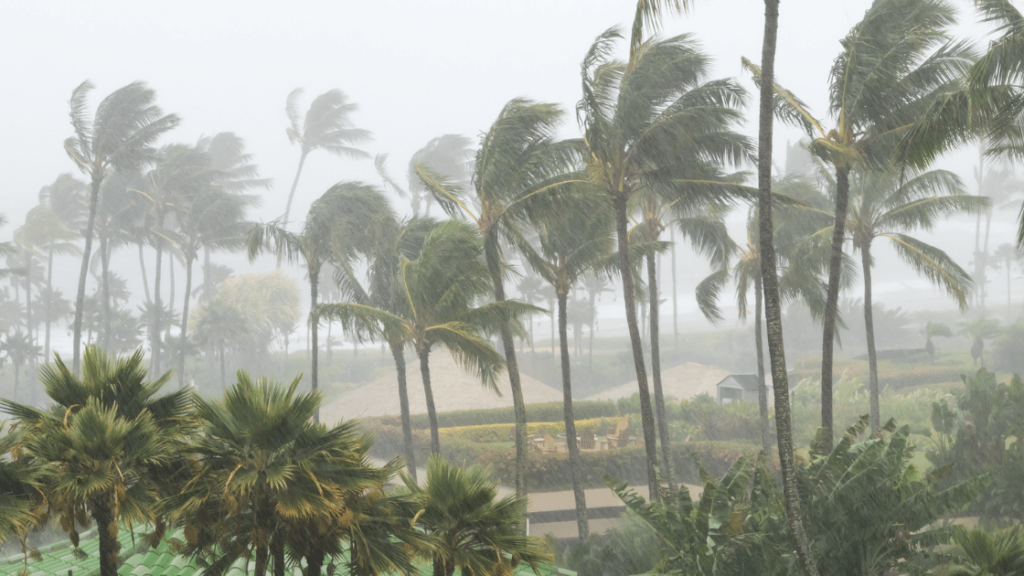How to Prevent Flooding from Rain for Your Home or Community
Rain flooding can devastate communities. TrapBags are used to protect residential, commercial, and municipal properties from rain flooding.

Many people associate floods with severe weather, such as hurricanes or thunderstorms, but even just rain can cause floods with the right conditions. The good news is that, in many cases, flooding from rain can often be prevented when strong protection systems are in place.
How Many Inches of Rain Causes Flooding?
Even just a few inches of rain can cause flooding. However, there are more factors at work that determine whether a flood will occur beyond just the amount of rain, including:
- Lack of ground absorption: Natural ground can absorb rain well, and certain environments can absorb more rain than others. However, urban environments made from concrete are built to withstand moisture, not absorb it. As a result, flooding is much more likely in urban areas.
- Proximity to water: Cities and towns built near rivers, lakes, dams, and coasts are much more likely to experience floods after heavy rain, especially if these natural resources are not properly maintained.
- Slope of land: Water is famous for taking the path of least resistance, meaning that it will continue to move downhill when given the chance. If you live at the bottom of a hill, in a valley, or in some other low-lying area, you may be at a greater risk for flooding after rain than those on higher ground.
- Snowmelt: Snow can sit on the ground for weeks or even months on end, slowly permeating the ground with moisture. When temperatures warm in early spring, even light rain on snow can result in flooding.
What Is a Flash Flood?
According to the National Weather Service, a flash flood is a flooding event that occurs within six hours of rainfall. Flash floods are particularly dangerous because they are fast-moving and intense. Within minutes, inches of rainwater can accumulate, creating a flow that is difficult for people, animals, and vehicles to escape.
How to Prevent Flooding from Rain
Use Flood Barriers
Flood barriers like TrapBag® are physical barricades that prevent flooding in temporary or permanent situations.
Many people are familiar with the use of sandbags as a flood barrier to prevent or mitigate floods. TrapBags are superior to sandbags, with one 100-foot section of four-foot-high TrapBags replacing nearly 8,000 sandbags. There are many reasons why TrapBags make for better flood barriers than alternative choices, including:
- Durability: TrapBags are made from a high-strength textile that makes the likelihood of structural failure minuscule.
- Interconnected structure: Individual sandbags must be installed with precision to ensure no gaps remain. TrapBag is unique in that each pentagon-shaped bag is connected to another in an accordion-like, interconnected structure, making leaks highly unlikely. This also means that if one single TrapBag fails, the entire structure remains unaffected
- Versatility: TrapBags can filled with sand, washed gravel, or concrete. This means they can be used both as permanent flood barriers in high-risk areas and as quick-deploy, temporary protection in an emergency.
Install a Flood Protection System
Simple installations of flood barriers can be used on residential and commercial properties in high-risk areas to protect them from rain flooding. However, municipalities and other government bodies can take things further by investing in a flood protection system to protect their communities from the devastating effects of floods. More permanent flood protection systems include:
- Dams: Reliable, well-maintained dams are crucial in preventing damaging floods during heavy rain.
- Dikes or berms: Berms, also known as dikes, run parallel to water, keeping land dry on one side and water in its place on the other. During heavy rain, dikes must be strong enough to prevent water from flowing over them to the dry land on the other side.
- Levees: With levees, land is protected from rain flooding and snowmelt. They are particularly effective alongside large bodies of water, such as the Mississippi River.
- Stormwater containment systems: Heavy rain can result in dangerous stormwater runoff that may be contaminated. TrapBags can be used to create stormwater containment systems that protect communities from runoff after heavy rainfall.
Stabilize Riverbanks
Heavy rain makes existing problems, like unstable riverbanks, even worse. TrapBags can be used to stabilize riverbanks, reducing the risk of riverbank flooding as a result of consistent rain.
Invest in Erosion Control
Erosion makes flooding worse by getting rid of natural flood barriers and methods of absorption. Meanwhile, the fast-flowing waters of a flood make erosion worse by moving sediment and destabilizing the ground. By investing in erosion control, you can prevent this vicious cycle.
Home Flood Prevention Tips
How to Stop Your House from Flooding When It Rains
Your house shouldn’t flood every time it rains. Take these steps to ensure your home is ready for the next storm:
- Clear your gutters: Clogged gutters can direct water back to the house, resulting in flooding.
- Repair cracks and leaks: If you notice issues with the structural integrity of your home, fix them immediately so they don’t worsen the next time it rains, causing more problems.
- Use TrapBags as flood protection: TrapBag makes it easy to create flood barriers that protect your home from water. If you know heavy rain always causes water to flow downhill toward your home, for example, put a stop to the destruction with a TrapBag flood barrier.
How to Prevent Basement Flooding During Heavy Rain
Basement floods may feel inevitable in the spring, but they are preventable with the right precautions:
- Floodproof your basement: Seal your basement well to prevent any leaks.
- Grade your home correctly: Ground that slopes toward your house will naturally result in flooding. Make sure your home isn’t sitting in a small depression with proper grading.
- Install a sump pump: Many people use sump pumps in their basement to prevent floodwaters from damaging their home.
- Use TrapBag: TrapBags can be used to protect basements from rain flooding by strategically placing them outside of the home.
How to Stop Your Yard from Flooding from Rain
Sometimes, the ground can no longer absorb any more moisture, resulting in yard flooding from rain. Here are some tips to mitigate such a situation:
- Ensure proper grading: Look for areas in your yard where depressions have formed, and add soil to ensure the ground slopes away from your property.
- Add vegetation: Plants increase your yard’s ability to absorb rainwater.
- Strengthen embankments with TrapBag: Sometimes, yards flood after rain due to their proximity to poorly maintained rivers, ponds, or other bodies of water. TrapBags can be used to protect your yard from any overflows by strengthening the embankments and stabilizing the soil around these bodies of water.
Protect Your Property from Rain Flooding with TrapBag
Sick of being up to your ankles in water every spring? Want to prevent the dangers of flash flooding from affecting your community? TrapBags can be used to protect residential, commercial, and municipal properties from rain flooding. Contact us today for more information.
Meet the author
Get the Dirt Before the Flood Hits
Stay ahead of flooding, erosion, and disaster response challenges. The Dirt, TrapBag’s monthly newsletter, delivers field-tested tips, real-world case studies, and the latest in barrier technology straight to your inbox.

